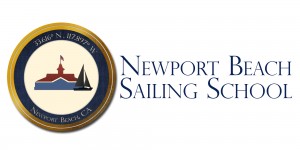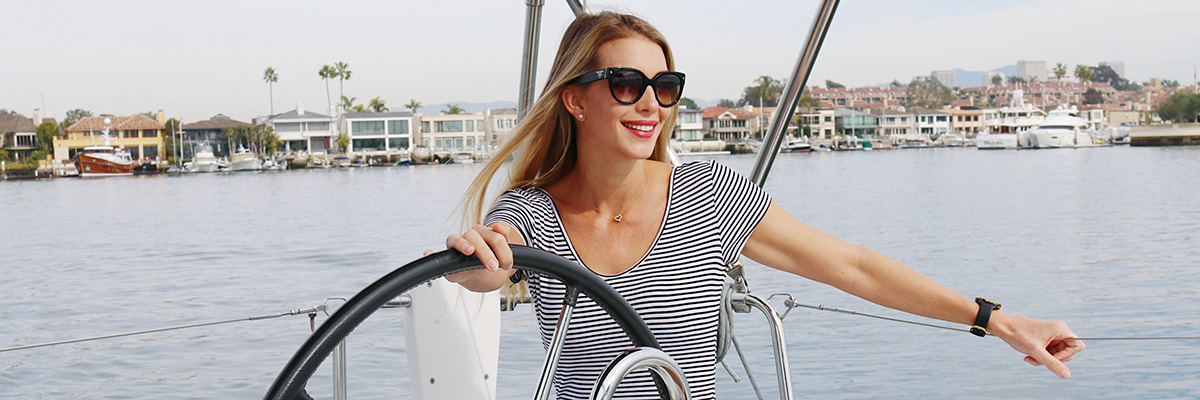ASA 103 – Basic Coastal Cruising
ASA 103, Basic Coastal Cruising Course
Three 4-hour or two 6-hour days on a Beneteau 35.1 or 38.1
Course Price and scheduling
Group Course
Total of four students–You and three other students, who we match you up with.
Group Course: $835 per student
Private Course
A private course for you and 1, 2 or 3 other people you know, based on your schedule.
Private Course 1 Student: $2075 total.
Private Course 2 Students: $2175 total.
Private Course 3 Students: $2275 total.
Private Course 4 Students: $2375 total.
Information about the Course
103 Overview
In this course, you will learn learn to skipper a sloop-rigged auxiliary powered keelboat by day in moderate winds and sea conditions. Learn cruising sailboat terminology, basic boat systems, auxiliary engine operation, docking procedures, intermediate sail trim, navigation rules, basic coastal navigation, anchoring, weather, safety and seamanship.
For a full list of all 52 topics (knowledge and skills) that will be covered click below.
Cruising Sailboat Terminology
1. Identify and describe the following cruising sailboat parts, areas, or systems and their functions:
- Turnbuckle
- Chainplate
- Stemhead Fitting
- Rudder Post
- Transom
- Compass
- Binnacle
- Cockpit Locker
- Emergency Tiller
- Saloon
- Companionway
- Galley
- V-berth
- Auxiliary Engine
- Bilge
- Bilge Pump
- Seacock
- Ground Tackle
- Windlass
- Hatch
- Through-hull Fitting
- Self-bailing Cockpit
Safety Equipment & Procedures
2. List the federally required equipment for a 33-foot recreational vessel equipped with an inboard diesel engine.
3. Describe the characteristics and benefits of Personal Flotation Devices (PFD’s), both Wearable (Life Jackets) and Throwable.
4. List the ASA recommended safety equipment for a recreational sailing vessel.
5. Describe ways to keep gear and equipment secure and in their proper location.
6. Describe the purpose and proper use of a safety harness and tether.
7. Describe safe refueling procedures for a vessel equipped with an outboard engine using gasoline or a diesel engine using diesel fuel.
Navigation & Weather
8. Demonstrate understanding of basic coastal navigation terminology and practices, including
- Essential navigator’s tools
- Use of navigation charts and symbols
- Depth soundings
- Bottom types
- Hazards
- Aids to navigation
- Latitude / Longitude
- Determining magnetic direction
- Measuring distance
9. Describe how to prevent undue magnetic influence on a compass.
10. Describe the dangers of, and how to avoid, a ‘lee shore.’
11. Obtain and interpret marine weather information; describe the impact that present observations and forecasts may have on sailing plans for the next 6 -12 hours.
12. Describe and identify Cumulonimbus clouds and what dangers they may signify.
13. Define ‘small craft advisory’ and ‘gale warning’ and describe precautions to be taken for each.
Sail Plan
14. Describe the appropriate sail combinations to carry under the following wind conditions: light (0-11 knots), moderate (12-19 knots), and heavy (20-33 knots).
15. Describe the procedures for reducing sail using a roller furling jib and a mainsail reefing system.
16. Describe the benefits of, and procedures for, heaving-to.
Seamanship
17. Describe the primary responsibilities of skipper and crew.
For elements 18 – 23, describe, using diagrams as appropriate, the applicable rules for a 33-foot recreational sailing vessel, as found in the USCG Navigation Rules and Regulations Handbook:
18. Proceeding at a safe speed (Rule 6), determination of collision risk (Rule 7), and taking early and substantial action to avoid collision (Rule 8).
19. Sailing vessels (Rule 12), overtaking (Rule 13), and power-driven vessels in head-on (Rule 14) and crossing (Rule 15) situations.
20. Give-way and Stand-on vessels (Rules 16 & 17).
21. Location, color and illumination angles of required navigation lights at anchor, under sail, and under power.
22. Actions to be taken when operating a vessel in restricted visibility such as fog or haze including adaptation of speed and use of sound signals.
23. Basic maneuvering and warning signals (short and prolonged whistle blasts) for inland waters.
24. Describe the appearance and purpose of the ‘Diver Down’ and ‘Alpha’ flags.
25. Describe common anchor types, major considerations for anchorage selection, and proper scope for short term and overnight anchoring as well as storm conditions.
Emergencies
26. Describe the three stages of hypothermia; name symptoms and treatment for each.
27. Describe two methods for getting a person out of the water and safely back on board the vessel.
28. Identify common sources and prevention of fires and/or explosions, as well as appropriate actions to be taken if these situations arise. Describe different types of fires and procedures for operating a fire extinguisher.
29. Describe immediate actions to be taken when the following urgent situations arise:
- Cabin filling with water
- Failed steering system
- Fouled propeller
- Failed running or standing rigging
- Dragging anchor
- Grounding at anchor
- Running aground under sail
- Engine failure
Preliminaries
30. Locate and examine for compliance the vessel’s federally required and ASA recommended safety equipment.
31. Demonstrate on shore or aboard the vessel the correct method for putting on a life jacket while in the water.
32. Identify the vessel’s battery selector switch and power distribution panel and ensure all switches are in the proper position for getting underway.
33. Ensure navigation lights (sidelights, stern light, steaming light, and anchor light) operate properly.
34. Perform a radio check using a working channel on the VHF radio.
Navigation
35. Visually pilot the training vessel in and out of a harbor, correlating nautical chart symbols to actual landmarks and aids to navigation.
36. Steer a compass course (+/- 5 degrees) under power for a minimum of five minutes.
Under Power
37. Visually inspect the auxiliary engine and demonstrate safe engine starting, operating, and stopping procedures. Demonstrate proper gearshift and throttle usage.
38. Ensure vessel & crew readiness and depart dock or slip smoothly and under control.
39. Approach a mooring buoy (or other mark as a simulation if no mooring available); stop the vessel within boathook reach; attach the vessel to the mooring using an appropriate line or bridle; cast off from the mooring and get underway.
40. Set a bow anchor in water depth 8 feet or greater, using correct procedures including hand signal communication, vessel maneuvers, safety in handling ground tackle, and proper operation of windlass (if equipped). Anchor should hold with engine in reverse gear at one-half throttle. Raise anchor and get underway smoothly using correct procedures.
41. Describe and demonstrate the correct actions to be taken while under power from the time a person falls overboard until safely recovered.
Under Sail
42. Hoist or unfurl sails correctly using halyards and / or furling devices. Describe the effect on sail trim or performance while adjusting each of the following lines and controls (if available on the practice vessel):
- downhaul or cunningham
- outhaul
- boom vang
- mainsheet
- traveler
- jibsheets
- jibsheet fairleads
- Discuss ways to reduce heeling.
43. Demonstrate correct winch operation, including safety considerations for line tension / breakage, hand / finger position, winch handle insertion / removal, and clearing overrides.
Without coaching or assistance, verbalize appropriate commands and demonstrate competence, safety and good seamanship in the role of Skipper / Helmsman during the maneuvers listed below. Honor all aids to navigation and use properly the Navigation Rules. Ensure sails are trimmed correctly and the vessel is in control at all times. Adjust sail controls appropriately as the vessel’s heading changes and wind / sea conditions evolve.
44. Get out of ‘irons’ then select and maintain a given tack and course.
45. Head Up, Tack, Bear Away, and Jibe while pausing briefly at each of the following points of sail: Close Hauled, Close Reach, Beam Reach, Broad Reach, and Run (with sails “wing on wing”).
46. Heave-to and get sailing normally again.
47. While underway, reduce sail area by reefing mainsail and genoa; then shake out reef.
48. As crew, give appropriate verbal responses and perform correct actions during the maneuvers listed above.
49. Describe and demonstrate the correct actions to be taken while under sail from the time a person falls overboard until safely recovered.
50. Lower and/or furl all sails and coil or flake and stow all lines properly.
Return to Dock/Slip
51. Ensure vessel / crew readiness and use the auxiliary engine to bring the vessel smoothly and under control to a stop next to a parallel dock or into a slip; secure the vessel using appropriate lines and fenders.
Knots
52. Describe the purpose of, and construct without assistance and in a timely manner, each of the following knots:
- Figure-8
- Square (Reef) Knot
- Clove Hitch
- Round Turn & 2 Half Hitches
- Cleat Hitch
- Bowline
- Sheet Bend
- Rolling Hitch
Prerequisite – ASA 101
Boat utilized and description – 2018 Beneteau 35.1 or 2017/2019 Beneteau 38.1
This is an attractive 35 or 38 foot sailing yachts with 3 cabins and 1 bathroom. This is a top of the line cruising model with all the comforts and features to make learning fun and safe. Features include: Roller furling sails, dodger and bimini, anchor windlass, autopilot, radar, GPS, and color chartplotter.
Boat location – Balboa Marina, Newport Beach, CA
The boat will be docked at the Balboa Marina where our office is located. This marina has some of the best facilities and is one of the best destinations in Southern California.
- Ample free parking
- Bathrooms and showers
- Two great restaurants with full bars – SOL Mexican Cocina & Tavern House Kitchen and Bar
- Starbucks across the street
- Gas station and minimart across the street
- Subway across the street
What’s included
- ASA 103 textbook “Coastal Cruising Made Easy”
- Fuel, insurance, and safety gear (including life jackets)
Cost Matrix to Reschedule a Class
Call us at (949) 209-9931 with any questions or to book by phone.




